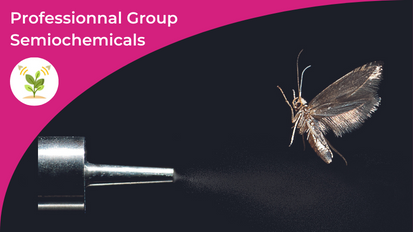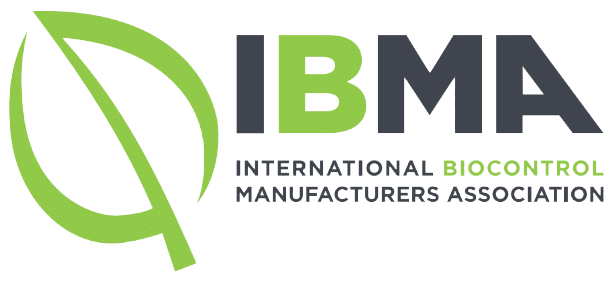Semiochemicals


Tomasz Magacz – Chair
Steering group:
Chair: Tomasz Magacz – GAB Consulting
Vice-Chair: Pasquele Cetola – Syngenta
Furthermore, the group has a Steering Committee formed by:
- Andrea Iodice and Bent Iversen, both CBC
- Raquel Calaf and Lidia Roura, both SEDQ
- Reinhard Kirstger, BASF
- Izzy Heller and Lacey Jenson, Bedoukian
Latest News
IBMA Position Paper on Commission Regulation (EU) No 2017/1432 and low-risk status of semiochemical active substances and plant protection products
The European Union actively promotes safer agriculture, with a low-impact on humans, animals and the environment. In line with this goal, the intention of the Sustainable Use Directive (Directive 2009/128/EC) and the Regulation (EC) No 1107/2009, is to reduce risk by favouring safer methods, and in particular, low-risk plant protection products.
Low-risk active substances and corresponding plant protection products can benefit from shorter authorization timelines. Low-risk criteria for active substances were amended in August 2017 by Reg. (EU) 2017/1432.
The very broad approach for deciding on low-risk status may not always guarantee that semiochemical PPPs will benefit from the same favourable authorisation conditions as low-risk PPPs, even if the semiochemicals released by these products expose humans, animals and the environment by the same route and at the same level as the natural exposure. In fact, Semiochemicals are naturally occurring substances used for intra- and inter-species communication by plants, animals and other organisms. They are currently used in agriculture as plant protection products with a target-specific and non-toxic mode of action. They are a useful tool in Integrated Pest Management strategies.
Currently, the use of semiochemicals in plant protection falls within the same regulatory framework as conventional pesticides, resulting in long timelines for the authorization of products based on these substances, despite the relatively small data packaged required.
IBMA asks the Commission to address this issue during the PAFF Standing Committee and actively support the low-risk status of defined representative uses of semiochemical active substances. This will facilitate the introduction of biological alternatives onto the market, will ensure consistency with the reduced data requirements as indicated by SANTE/12815/2014, and will allow compliance with the objectives set out by Directive 2009/128/EC for a more sustainable use of pesticides.
IV Jornadas Internacionales de Feromonas, Almería, 2018
Alessandra Moccia
Regulatory framework for the registration of semiochemicalbased PPPs in the EU
2017 Activities Summary
The semiochemical professional group gathers manufacturers of semiochemical active substances and producers of plant protection products based on such active substances.
The term semiochemicals includes all the substances or mixtures of substances emitted by plants, animals, and other organisms that evoke a behavioural or physiological response in individuals of the same species (i.e. pheromones) or in individual of another species (i.e. allelochemicals).
Some of the most important steps forward in the EU regulatory framework for semiochemicals have been the finalisation of the ‘EU Guidance Document on Semiochemical Active Substances and Plant Protection Products’ (SANTE/12815/2014 rev. 5.2), which finally became applicable to all application submitted from 1 January 2017 onwards, and the publication of EPPO Standard PP 1/296 ‘Principles of efficacy evaluation for low-risk plant protection products’, which allows extrapolation among crops for semiochemical plant protection products.
Other key activities in 2017 focused around the following topics:
- Semiochemical as low risk active substances
Participation to the commenting phase for the Implementing Act on Low Risk Criteria and status of Semiochemical as low risk active substances (resulting in Regulation (EU) 2017/1432 of 07.08.17). Participation to the OECD Biopesticide Seminar on “Niche Uses of Highly Specific Biocontrol Products”.
- Regulatory scope of monitoring, mass trapping and mating disruption
Participation to the REFIT survey process and definition of the objectives for the preparation of a position paper. Further activities will follow in 2017.
Main activities for 2018 will focus consistently on two areas: legitimate specific semiochemical uses to be recognised as low-risk based on mode of application and exposure, and assess the fitness of Reg. 1107/2009 for semiochemical with the context of the REFIT process.
 Square de Meeûs 35, 1000 Bruxelles
Square de Meeûs 35, 1000 Bruxelles